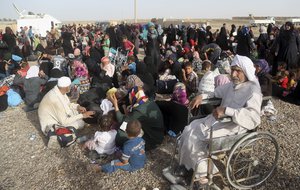Wink & Nod’s next executive chef will be remembering home with new menu
Edit The Boston Globe 24 May 2016
Wink & Nod, a culinary incubator in Boston’s South End, has chosen its next�resident. Chef Gita Kantrow�will take the reins from current chef Brendan Pelley August 1 when she debuts her concept restaurant featuring�Nepalese-inspired cuisine. “The restaurant will feature contemporary Nepalese cuisine, not authentic,” she said. “I was born in Nepal,�but I also grew up […] ... > ... ....
CelebrAsian 2016 is May 27 and 28 at Western Gateway Park in Des Moines
Edit The Examiner 21 May 2016
CelebrAsian, the Asian Heritage Festival held annually by the Iowa Asian Alliance, will hold their 2016 event at Western Gateway Park in Des Moines on Friday, May 27 and Saturday, May 28 ... Admission to CelebrAsian is free, and the event is open to all ages ... to 9 p.m ... This year's festival will feature Chinese, Filipino, Korean, Taidam, Indian, Hmong, Vietnamese, Indonesian, Laotian, Cambodian, Japanese, Thai, and Nepalese cuisines ... ....
From the lap of Himalayas
Edit Deccan Herald 14 Mar 2016
I love cooking all cuisines including Nepalese. Nepalese food is generally healthier as it has more vegetables, lean meats, pickles and green salads ... My main motive is to spread the taste of Nepalese cuisine among people. Hence, my fiance Depen Lama and I have started a venture called ‘DeRa’s Delicacy’ in the City to popularise this cuisine ... Apart from food items, I also make different types of Nepalese pickles....
Scale new heights in gastronomy
Edit Deccan Herald 25 Sep 2015
Nepalese cuisine ... It is a restro-cafe, that serves authentic Nepalese cuisine, along with Chinese and Thai cuisines ... The entrance to the cafe is something that you might just be attracted to explore ... The menu is categorised into Nepalese, Chinese and beverages, with ample options to choose from ... For a traditionally-knitted Nepalese cuisine in Bengaluru, this is a must-try place ... ....
Falmouth fundraisers help build village in quake hit Nepal The owners ...
Edit Topix 05 Aug 2015
The owners of a Nepalese restaurant in Falmouth have thanked everyone who ... The owners of the Gurkha Nepalese Cuisine on the Moor raised around A 6,000 with a charity dinner for around 200 people in May, along with other donations, and has now seen the results of the fundraising as new homes spring up for those made homeless by the quakes in April.......
Embrace the fun, food and music at Engadine Street Festival (Sutherland Shire Council)
Edit Public Technologies 31 Jul 2015
(Source. Sutherland Shire Council). Published On 31 July 2015 at 02.00 PM. It's been a few years since Engadine Village has hosted a major event in the heart of town but that is all set to change in August ... Some of the tastes on offer will include Engadine Rotary Club's Sausage Sizzle, Turkish gozleme, Thai, Asian and Nepalese cuisine, pancakes, cookies, cakes, snowcones and fairy floss ... Prev. Media Contacts ... (02) 9710 0493 or 0422 008 328....
Tour Operators Returning to Nepal
Edit About.com 29 Jul 2015
... country’s hidden gems to the five-day short breaks trip that explores Kathmandu and the Nepalese countryside ... This journey explores both Bhutan and Nepal and includes Tiger's Nest Monastery; an elephant-back safari in Chitwan National Park; and a rickshaw ride to Durbar Square as well as traditional Nepalese cuisine,he Kopan Nunnery and more....
Meet the Maker - Nepalese Restaurant (Eurobodalla Shire Council)
Edit Public Technologies 26 Jun 2015
(Source. Eurobodalla Shire Council). When. 27th Jun 2015 12.00pm-2.00pm. Where. Nepalese Restaurant, 40 Vulcan Street, Moruya. Cost. Menu prices apply. Come and meet the creator of authentic Nepalese cuisine right here on the South Coast ... More information....
London pop-up restaurant to serve Nepalese food for earthquake relief
Edit Mashable 29 Apr 2015
Headed by a Nepalese chef named Rajiv KC, the restaurant will prepare traditional three-course meals for diners, while disaster-response experts speak about their experiences ... An example of the traditional Nepalese cuisine Rajiv's Kitchen serves ... nonprofit Kids Company, while a September 2014 event served Syrian cuisine in support of Syrian refugees....
ULM's Nepalese Student Association holds annual Nepali night April 19 (University of Louisiana at Monroe)
Edit noodls 15 Apr 2015
The University of Louisiana at Monroe's Nepalese Student Association will hold Nepali Night 2015 ... Nepalese cuisine will be served, and students and community members will perform cultural dances, music, and more....
El Celler de Can Roca designs menus for Carlos Soria BBVA expedition to Annapurna (BBVA - Banco Bilbao Vizcaya Argentaria SA)
Edit noodls 19 Feb 2015
The menu, varied and energy-giving from the nutritional point of view, will attempt -differences aside- to take the spirit and the dishes of El Celler de Can Roca to the Nepalese Himalayas ... The Catalan pastry chef will take advantage of this trip to explore the world of Nepalese cuisine ... Now we're going to take our cuisine as high as possible"....
Traditional, ethnic and upscale choices spice up West Roxbury’s lively dining scene
Edit Boston Herald 16 Jul 2014
In the space of the next block, you can pick up pie or self-serve frozen yogurt at new-to-West Roxbury Mangia Neapolitian Pizzeria; enjoy critically acclaimed Nepalese cuisine at Himalayan Bistro; order “distinguished” burritos at Los Amigos, one of West Roxbury’s most popular spots for family takeout; savor “downhome ......
Whole Foods Market Northern California awards 40 grants to small local businesses (Whole Foods Market Inc)
Edit noodls 27 Jun 2014
(Source. Whole Foods Market Inc) News Release.. Five percent of total sales at each store on July 2 goes to a local producer selected by the community. Emeryville, Calif ... This is the first time the company has implemented a grant program ... More information is online at localfoodmakergrant.com ... The winners are, by store. ... Jammit ... Chalk Hill Cookery - plant based cuisines and cooking classes ... Bini's Kitchen - Nepalese cuisine from the soul....
- 1
- 2
- 3
- 4
- 5
- Next page »









